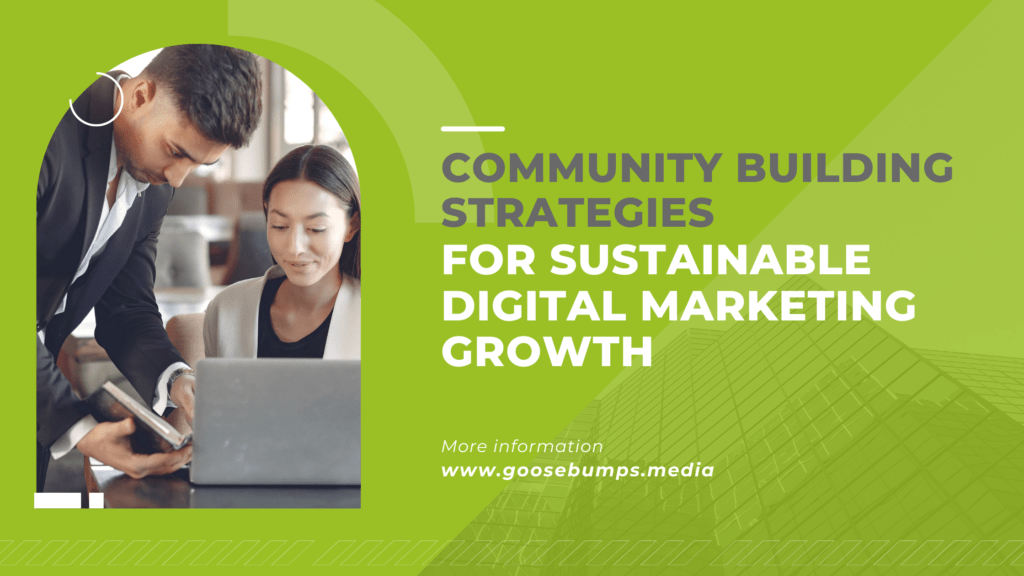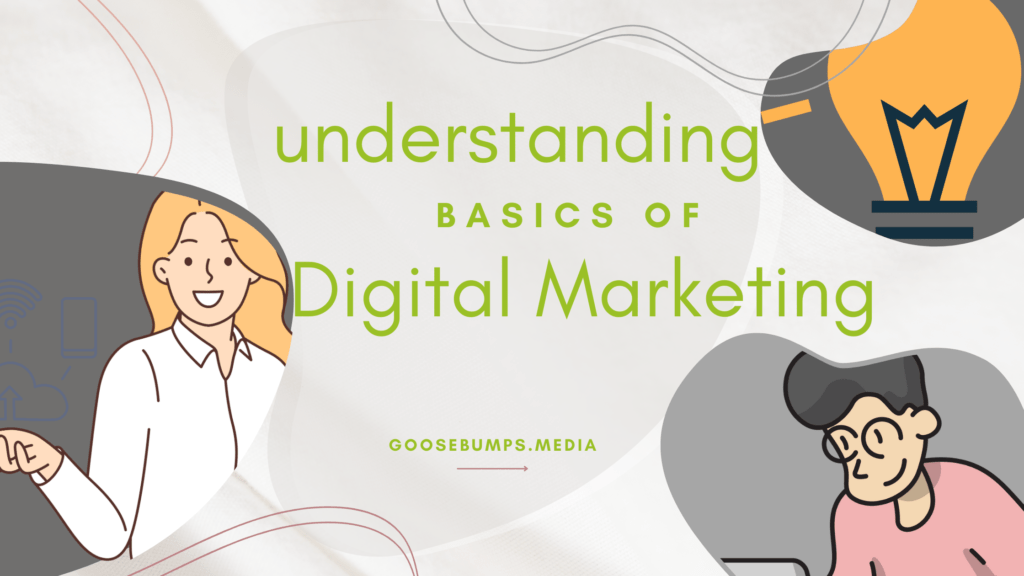
In the fast-paced world of digital marketing, building a loyal and engaged community is essential for sustainable growth. Community building goes beyond merely attracting customers; it’s about fostering relationships and creating a sense of belonging among your audience. This approach not only boosts brand loyalty but also drives organic growth and long-term success. Let’s dive into the strategies that can help you build a thriving digital community.
Understanding Community Building
Definition and Significance
Community building in digital marketing refers to creating a space where your audience feels connected, valued, and engaged. It’s about fostering relationships that go beyond transactional interactions. A strong community can turn customers into brand advocates, driving word-of-mouth marketing and organic growth.
Key Components of a Strong Community
- Engagement: Active participation from members.
- Value: Providing content and interactions that matter.
- Connection: Fostering relationships and a sense of belonging.
- Support: Offering assistance and addressing concerns promptly.
Identifying Your Target Audience
Importance of Knowing Your Audience
Understanding who your audience is crucial for effective community building. Knowing their interests, needs, and pain points allows you to create content and interactions that resonate deeply.
Methods to Identify and Understand Your Audience
- Surveys and Polls: Gather direct feedback.
- Analytics Tools: Use data to understand behavior and preferences.
- Social Listening: Monitor conversations and trends related to your brand.
Creating Valuable Content
Content That Resonates with Your Community
Creating content that adds value is key to building a loyal community. This content should address the needs and interests of your audience, providing solutions, entertainment, or education.
Types of Content to Engage and Retain Community Members
- Blog Posts: Informative and educational articles.
- Videos: Engaging and visually appealing content.
- Infographics: Easy-to-digest and shareable information.
- Interactive Content: Quizzes, polls, and contests.
Utilizing Social Media Platforms
Choosing the Right Platforms for Your Community
Not all social media platforms are created equal. Choose platforms where your target audience spends most of their time. For instance, Instagram and TikTok might be better for younger audiences, while LinkedIn is ideal for professionals.
Strategies for Effective Social Media Engagement
- Consistent Posting: Keep your audience engaged with regular updates.
- Interactive Content: Encourage participation through polls, Q&A sessions, and live videos.
- Respond Promptly: Engage with comments and messages to build trust.
Building Relationships Through Engagement
Importance of Interaction and Responsiveness
Engagement is the heart of community building. Responding to comments, acknowledging contributions, and being present in conversations foster a sense of community.
Techniques for Fostering Genuine Connections
- Personalized Responses: Address community members by name and acknowledge their contributions.
- User Spotlight: Highlight community members’ stories and achievements.
- Feedback Loops: Regularly seek and act on feedback from your community.
Leveraging User-Generated Content
Encouraging Community Contributions
User-generated content (UGC) is a powerful tool for community building. Encourage your audience to create content related to your brand and share it.
Benefits of User-Generated Content for Community Growth
- Authenticity: UGC adds authenticity and trust to your brand.
- Engagement: Increases interaction as members feel valued.
- Cost-Effective: Reduces the need for constant content creation by the brand.
Hosting Events and Webinars
Benefits of Live Interactions
Live events and webinars create opportunities for real-time interaction, fostering deeper connections with your community.
Planning and Executing Successful Events
- Choose Relevant Topics: Address current issues or trends relevant to your audience.
- Promote Widely: Use social media, email, and other channels to promote the event.
- Engage During the Event: Use polls, Q&A sessions, and interactive elements.
Collaborating with Influencers
Role of Influencers in Community Building
Influencers can help amplify your message and reach a broader audience, lending credibility to your brand.
Selecting and Working with the Right Influencers
- Relevance: Choose influencers whose audience aligns with yours.
- Authenticity: Work with influencers who genuinely believe in your brand.
- Clear Agreements: Outline expectations and deliverables clearly.
Providing Exceptional Customer Support
Importance of Responsive and Helpful Support
Excellent customer support can turn dissatisfied customers into loyal community members. Prompt and effective responses build trust and satisfaction.
Strategies to Enhance Customer Service
- Multi-Channel Support: Offer support through various channels like email, social media, and live chat.
- Knowledge Base: Provide self-help resources for common issues.
- Feedback Collection: Regularly collect and act on customer feedback.
Creating a Loyalty Program
Benefits of Rewarding Loyal Community Members
A loyalty program incentivizes repeat engagement and fosters a sense of belonging among community members.
Designing an Effective Loyalty Program
- Reward Variety: Offer various rewards that appeal to different members.
- Easy Access: Ensure the program is easy to join and participate in.
- Transparency: Clearly communicate how the program works and how members can earn rewards.
Measuring Community Growth
Key Metrics to Track
Tracking the right metrics helps you understand the health and growth of your community.
- Engagement Rate: Interaction levels on your content.
- Growth Rate: Increase in community members over time.
- Retention Rate: Percentage of returning members.
Tools and Techniques for Measurement
- Analytics Platforms: Use tools like Google Analytics and social media insights.
- Surveys: Collect direct feedback from your community.
- Regular Reviews: Conduct regular reviews of your metrics to track progress.
Adjusting Strategies Based on Feedback
Importance of Listening to Your Community
Regularly seeking and acting on feedback shows that you value your community’s input and are committed to meeting their needs.
Adapting and Evolving Your Strategies
- Implement Changes: Make necessary changes based on feedback.
- Communicate Updates: Keep your community informed about changes and improvements.
- Continuous Improvement: Always look for ways to enhance your community building efforts.
Case Studies of Successful Community Building
Examples of Brands with Strong Communities
- Nike: Engages with its community through social media and events.
- LEGO: Fosters a community of fans who create and share their own designs.
- Starbucks: Uses loyalty programs and social media to connect with customers.
Lessons Learned from Successful Campaigns
- Consistency is Key: Regular engagement and content creation are crucial.
- Value-Driven Content: Always provide value to your community.
- Authenticity Matters: Be genuine in your interactions and efforts.
Conclusion
Building a strong community is a journey that requires dedication and consistent effort. By understanding your audience, creating valuable content, and engaging genuinely, you can foster a loyal community that supports your brand’s growth. Start implementing these strategies today and watch your digital community flourish. Goosebumps offers free consultations you can contact anytime to start building your community.


